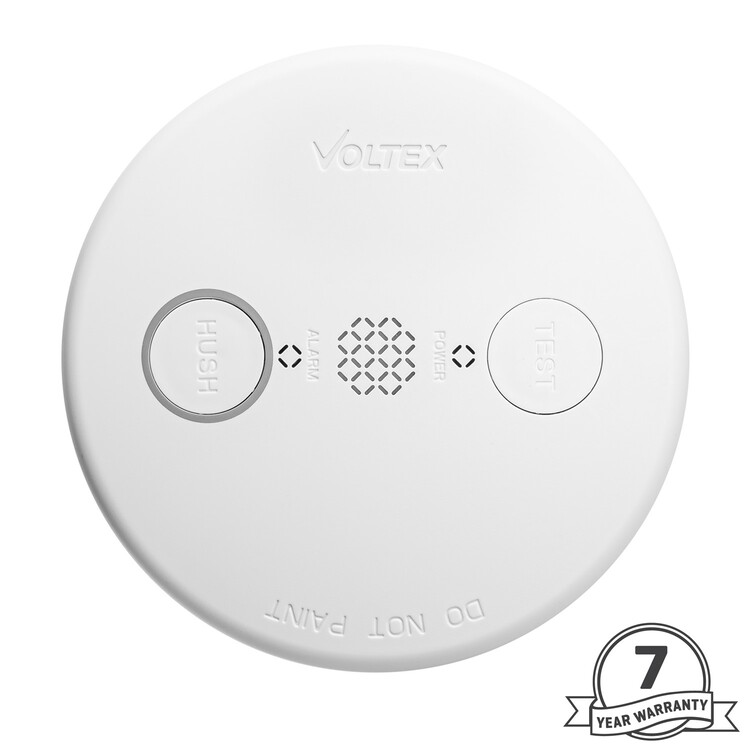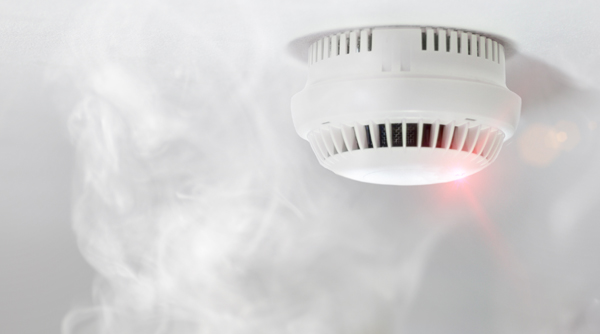
In a world where our homes and family members' safety are paramount, one unsung hero stands tall, ever reliant: the smoke alarm. These tiny devices can do wonders in terms of keeping our properties safe from fire hazards. As experienced service providers in the field, we understand the concerns behind their placement, installation, and maintenance.Do you feel anxious when leaving home, worried that your gas heater or electrical devices could cause an unexpected fire? Do not worry, everyone has been there at least once in their lives. In this comprehensive guide, we will explore the functionality of smoke alarms and the crucial role they play in preserving the most important things in life.
Smoke Alarms: The Ins and Outs
Have you ever wondered how these amazing smoke alarms detect smoke and respond to it? Let us try and understand the functionality of these in two simple steps!
Smoke alarms use photoelectric sensors to detect smoke. A light source emits a constant beam of light, and when smoke enters the alarm, it scatters the light, triggering the smoke detection mechanism. This allows for early detection of potential fire hazards and prompts appropriate action.
Once the smoke is detected, the smoke alarm switches into full alert mode. It activates a loud, attention-grabbing alarm sound, making sure that you and your loved ones are immediately notified of potential danger.
Understanding the specifics of these alarms helps you make informed decisions when protecting your home. Now that we have explored the types of smoke alarms and how they work let us move forward and look at the art of strategic placement.
General Guidelines: Safeguarding Every Corner of Your Home
Strategic positioning is crucial when it comes to smoke alarm placement. So, for that, let us look at the best places for installing them in various areas of your house. This will ensure comprehensive coverage and maximum safety for you and your loved ones.
It is a well-known fact that the kitchen is a hotspot for fire hazards. Furthermore, it is not easy to place a smoke alarm due to false alarms caused by cooking activity. So, to prevent that, it is recommended to place them at least 10 feet away from the cooking area.
During an emergency, hallways serve as escape routes. So, one can install smoke alarms in hallways, especially near bedrooms and common areas. As a result, these give occupants plenty of time to evacuate during fire outbreaks.
The bedroom is one of the most ideal places to install a smoke alarm. Place one in every bedroom of your house, providing a crucial line of defence as you sleep. In fact, smoke spreads quickly, and having an alarm within close proximity ensures early detection and allows swift response.
A living area is usually the heart of a home and deserves to be protected. Install smoke alarms in living areas, such as the living room or family room. These spaces are often the central gathering points for family and friends. And in case of a fire, these alarms act as proactive alerts, issuing timely warnings to ensure safety.
However, if your kitchen has a separate dining area or is adjacent to other rooms, consider installing an alarm nearby to ensure comprehensive coverage.
Now that we have covered the general guidelines let us explore some practical do's and don'ts to ensure your smoke alarms are effectively positioned. Here is what you need to know:
By following these placement guidelines and avoiding the most common mistakes, you will be able to create a comprehensive network of smoke alarms that will form a protective shield around your home.
A Step-by-Step Installation Guide
Here is a step-by-step guide to ensure your smoke alarms are correctly mounted, wired, and tested to ensure peak performance.
Common Installation Mistakes: Pitfalls to Avoid
While the installation process may seem straightforward, there are common mistakes that could affect smoke alarm’s effectiveness. By being aware of these pitfalls, you can ensure a seamless installation experience.

Keeping Your Smoke Alarms in Peak Condition: The Importance of Regular Maintenance
Just like any other device, smoke alarms require regular maintenance to keep them in top-notch condition. By dedicating some time and attention, you can ensure their reliability and longevity. So let us find out how to take care of them.
Identify potential problems by performing routine checks. Ensure that there are no signs of physical damage or discoloured smoke sensors on the alarms. Apart from that, address any issues honestly and seek professional help if needed.
The heartbeat of your smoke alarm lies in its battery. Therefore, replace the batteries at least once a year, or as recommended by the manufacturer. Additionally, consider using long-lasting lithium batteries for extended performance.
Over time, dust and debris can accumulate, making smoke alarms less effective. So, make sure to clean the exterior and interior of the alarm using a soft brush or vacuum cleaner attachment to remove any obstructions.
However, if your kitchen has a separate dining area or is adjacent to other rooms, consider installing an alarm nearby to ensure comprehensive coverage.
Reducing Unwanted Beeps: How to Troubleshoot False Alarms
Smoke alarms beeping for no reason can be frustrating, but understanding their causes and implementing the solutions can help resolve the cause. Here are some troubleshooting tips to reduce the unwanted smoke alarm beeping:
If false alarms occur frequently in a specific area, consider relocating the smoke alarm slightly farther away to reduce unnecessary triggers.
If false alarms persist despite troubleshooting efforts, consult a qualified electrician or certified installer to assess and resolve the issue.
Determine the source of the false alarm. It could be steam from hot showers, cooking fumes, or excessive dust. Addressing the root cause can minimise false alarms.
By implementing regular maintenance, conducting routine tests, and effectively managing false alarms, you will ensure that your smoke alarms remain an important part of your home's alarm system.
The importance of smoke alarm placement, installation, and maintenance cannot be overstated. These small devices serve as protective guardians, safeguarding our homes and loved ones from fire's devastating consequences. By following the guidelines discussed in this blog, you can make your home a safer living space. Remember, it is not enough to just install them. Their maintenance, including cleaning, replacing batteries, and testing ensures optimal performance. By dedicating a small amount of time and attention, you can ensure that they are always functional in case of an emergency. At Ku-ring-gai Electrical Service, we understand the importance of fire safety and are committed to serving our community. With our expertise in smoke alarm placement, installation, and maintenance, we provide reliable and professional services. Our team is dedicated to safeguarding your well-being, and what matters most to you. Contact us today to talk to one of our friendly electricians to discuss your smoke alarm needs. We would love to help you keep your home safe! Call us at 0418 442 578 !